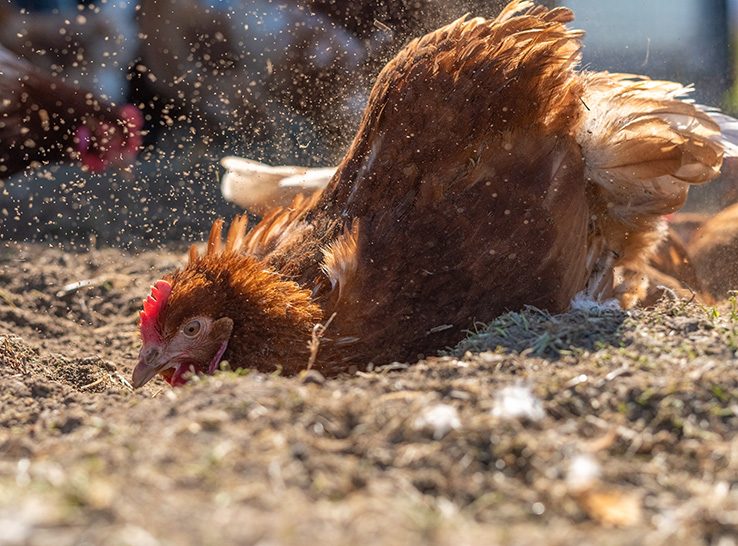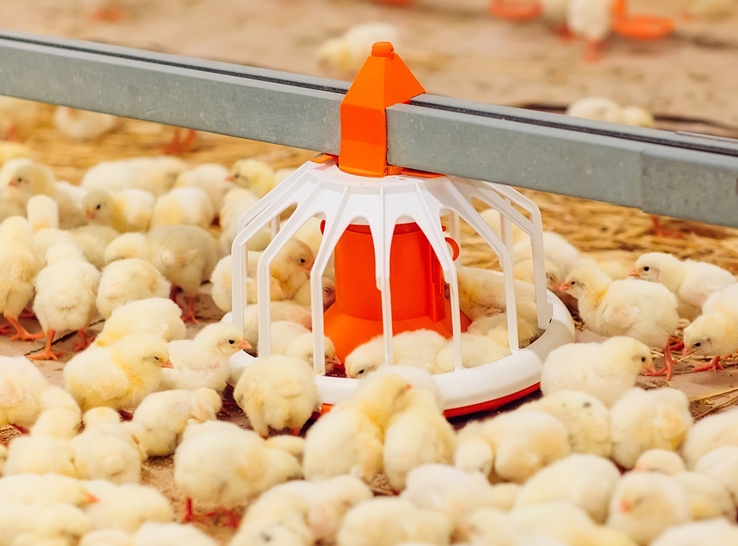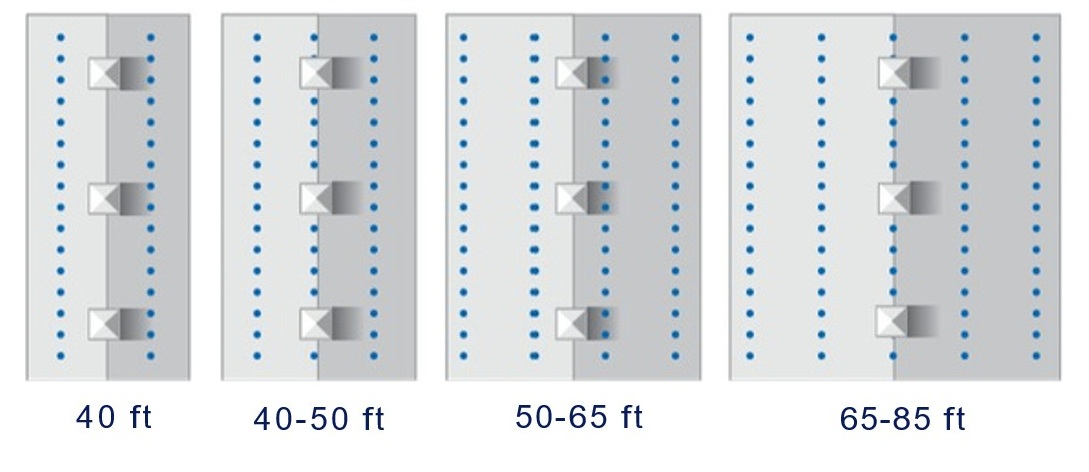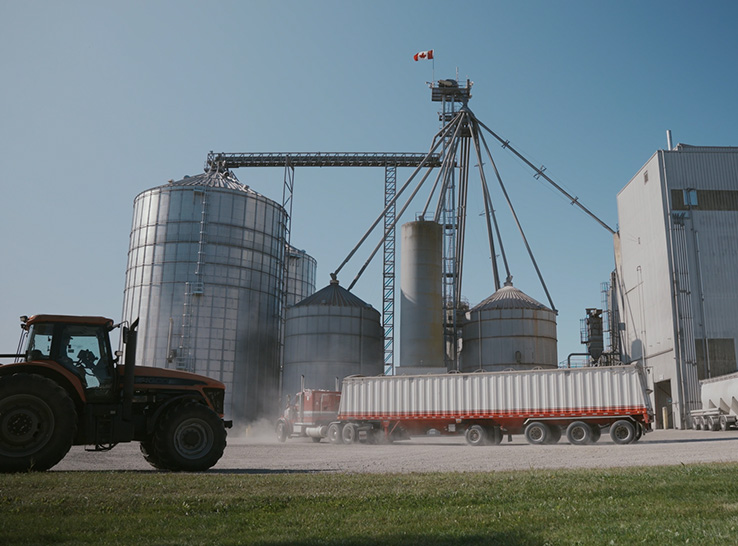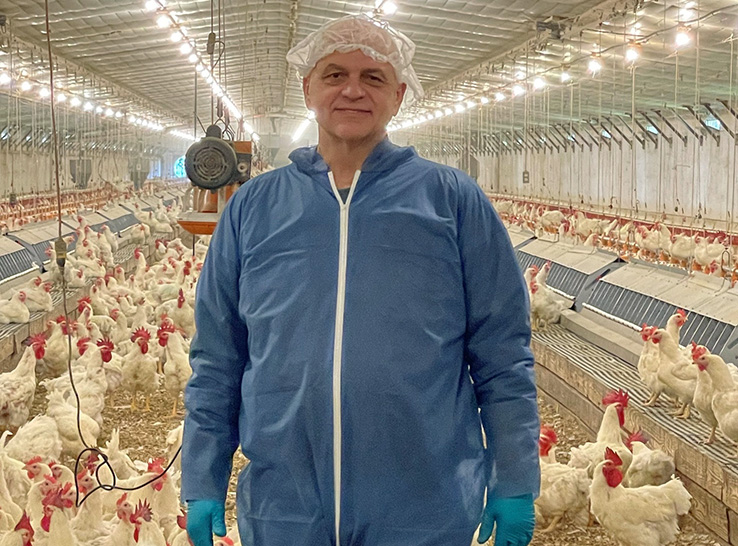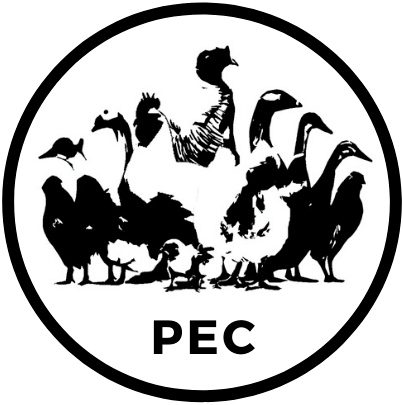By Anusha Gautam and Bethany Baker-Cook, PhD, Auburn University
Feed is a vital part of the poultry industry, representing around 60-70% of the total costs. However, even the best feed formulation cannot deliver results if the birds cannot access it readily. Proper feeder management is not just about reducing feed wastage, it is also vital for optimizing bird health, productivity and welfare. By reducing aggression, minimizing competition, preventing frustration and improving uniformity, how and where birds eat has an impact throughout production. Therefore, it is important to understand the right type of feeders to select for each of the production phases, appropriate feeder spacing, proper feeder height, and the overall feeder arrangement.
In commercial poultry production, chain feeders and pan feeders are widely used, while pan feeding systems are more common for rearing broiler chickens. In a chain feeding system, a continuous chain is used to distribute feed to the birds, whereas in pan feeding systems, the pan feeders are incorporated into automatic feeding systems, with feed being delivered via an auger line. Alongside the pan feeders, traditional feeding practice includes placing supplemental feeders during the initial days of chicks’ lives.
Feeder types
Throughout broiler production, there are two key types of feeders, the supplemental feeder and the main or standard feeder. The conventional feeding practice for broilers includes placing the supplemental feeders alongside the standard feeders during the initial days of chicks’ lives. Both feeder types are available in different designs, each with its own benefits and drawbacks.
Supplemental feeders
Ensuring chicks are able to find feed and start eating as soon as possible after placement is vital to their survival (more information on this in our previous newsletter, Vol 41.) Supplemental feeders assist with the feeding activities of young birds. These feeders have either no or a low rim, making it easy for chicks to access the feed. Also, these feeders should be kept full so that it serves a visual attraction to assist with nutritive behaviors of young birds. The most commonly available supplemental feeders are turbo feeders, feed trays and the chick papers.
Commercial poultry feeding practices using TURBO feeder, feed tray, and chick paper can be viewed at:
- https://www.sephnos.com/us/blog/dedicated-feed-line-with-turbogrow-breeder
- https://www.eastiowaplastics.com/products/pakster/feeder-trays/
- https://www.jupiteragrobiotech.com/en/product/goodstart-chick-paper-white-regular/
Research has shown that birds/chicks prefer to eat from the feeder that is easiest to access (Neves et al., 2010). Furthermore, chicks also prefer to eat from supplemental feeders than standard pan feeders (Gautam, 2025). An added benefit of supplemental feeders is that there is more feeding space. This means that there is less competition for feed, which is also associated with improvement in feed consumption, body weight, body weight gain, and feeding efficiency of broiler chickens (Purswell et al., 2021). Therefore, supplemental feeders in the first week of life are very crucial for broilers. Sometimes, birds’ ability to enter the feeder may increase feed contamination by feces, which could increase the risk of exposure to pathogens. Although there are no direct studies on supplemental feeder contamination, more research would be beneficial to quantify such risks.
Standard feeders
Commercially available standard feeders also have different design features, according to the manufacturing company and the feeder model. Producers usually select the models based on various factors such as flock size, housing area, expenses, and feasibility. it is important that feeders can facilitate the efficient feeding activities of broiler chickens. Generally, it is industry practice that producers use pan feeders rather than chain feeders for broiler production. Pan feeders have a comparative advantage, as they are considered to allow unrestricted movement of birds throughout the house (Cobb, 2021). The freedom of movement increases active walking behaviors, which is important for good welfare of broiler chickens (Dawkins, 2024).
Commercial poultry feeding practices using a Chain feeder (1), and Pan feeders (2), (3), (4), (5) can be viewed at:
- https://www.bigdutchmanusa.com/poultry-production/products/breeder-management/breeder-feeding/champion-chain/
- https://www.provisioneronline.com/articles/109827-roxell-is-expanding-the-range-of-minimax-feeder-pans
- https://www.val-co.com/wp-content/uploads/IMG-20190529-WA0004.jpg
- https://encyclopediaofalabama.org/media/broiler-chicken-house/
Did you know?
The first pan feeder was introduced in the early 1950s in the US, and since then, it has been very popular for broiler production (Van der Sluis, 2010)
Birds have access to standard pan feeders from the start; however, research has shown that broiler chicks prefer to eat from the supplemental feeders during the initial days (Gautam, 2025).
Typically, supplemental feeders are recommended to be removed gradually, with one-third of supplemental feeders taken out over several days (USDA, 2013). Such practice can provide a smoother transition for birds towards eating from the standard feeders. Also, it can be useful to avoid abrupt changes in feeder placement and to prevent spatial confusion in chicks that may cause birds to consume litter (USDA, 2013).
Feeder space
The amount of space per bird at the feeder is another key part of feeder management. With insufficient feeder space, feeders can become overcrowded, leading to competition, meaning not all birds may get the chance to eat at the same time, especially in the morning, when all birds want to eat immediately after the lights are on. It can also mean that birds get disrupted during feeding (Duncan, 1998; Fraser, 2009). This can cause aggressive behaviors (Sirovnik et al., 2018) and other welfare issues such as increased stress and poor performance (Abudabos et al., 2013). Providing sufficient feeder space, especially during early life, can improve feed consumption and increase the overall feeding efficiency (Purswell et al., 2021). The Poultry Industry Manual of the USDA (2013) has mentioned that standard 12‑inch pan feeders can typically feed 45–80 broilers, with fewer birds per pan as birds grow larger.
Stocking density
Feeder space per bird is also influenced by stocking density, as the higher the density, the less feeder space would be available for the birds. The recommendations on stocking densities depend on the final age and market weight of the birds. For instance, birds grown to below 4.5 lbs live weight can be stocked at around 6.5 lbs/ ft², but birds grown to 7.5 lbs or more should not exceed 9.0 lbs/ ft² (National Chicken Council, 2017).
The National Farm Animal Care Council (Canada) and the EU Broiler Council Directive 2007/43/EC suggest that stocking density must not exceed 6.14 lbs/ft² and 6.76 lbs/ft², respectively. However, when rigorous environmental and welfare conditions are consistently met and documented, the stocking density can be increased up to a maximum of 7.78 lbs/ft² in Canada and 7.99 lbs/ft² in EU.
Feeder height
Feeder height needs to be increased as the birds grow, so that it is level with the top of the broilers’ breast or back (Aviagen, 2025). Incorrect feeder height can discourage subordinate birds or those with lower body weight from having optimum feed intake, thereby compromising the welfare of birds and interfering with flock uniformity (Ferket and Gernat, 2006). Therefore, considering feeder height during the rearing period of broiler chickens has been suggested to improve their feeding behaviors (Neves et al., 2014).
Feeder arrangement
How feeders are distributed in the houses can also influence the feeding behavior and welfare of broiler chickens. Using multiple feeders rather than one single feeder with similar feeder space can reduce overcrowding (Li et al., 2021). It is because birds are attracted to feeders when they see nearby birds eating, a phenomenon referred to as “social facilitation” (Collins and Sumpter, 2007). Providing sufficient feeding locations throughout the house can reduce the crowding and promote evenly distributed eating. This is important for the welfare of birds as it reduces stress while birds are reaching for feed. Usually, feeders are arranged in a row depending on the width of the houses (40-85 ft) and the number of feed lines (2-5).
Final notes
- Supplemental feeders provide an easier and additional feeding environment during the early life of chicks, while standard feeders facilitate feeding throughout the rearing period.
- The right selection of feeder types, proper allowance of feeder space, maintaining optimum feeder height, and appropriate arrangement of feeders can promote uniform feeding activities of broiler chickens.
- Overall feeder management can improve the performance and welfare of broiler chickens.
References
- Abudabos, A. M., Samara, E. M., Hussein, E. O. S., Al-Ghadi, M. Q., & Al-Atiyat, R. M. (2013). Impacts of Stocking Density on the Performance and Welfare of Broiler Chickens. Italian Journal of Animal Science, 12(1). https://doi.org/10.4081/ijas.2013.e11
- Aviagen. (2025). Broiler management handbook. https://aviagen.com/assets/Tech_Center/Ross_Broiler/Aviagen-ROSS-Broiler-Handbook-EN.pdf
- Cobb. (2021). Cobb Broiler Management Guide. https://www.cobbgenetics.com/assets/Cobb-Files/Broiler-Guide_English-2021-min.pdf
- Collins, L. M., & Sumpter, D. J. T. (2007). The feeding dynamics of broiler chickens. Journal of the Royal Society Interface, 4(12), 65-72.
- Dawkins, M. S. (2024). Active walking in broiler chickens: a flagship for good welfare, a goal for smart farming and a practical starting point for automated welfare recognition. Frontiers in Veterinary Science, 10, 1345216.
- Duncan, I. J. (1998). Behavior and behavioral needs. Poultry science, 77(12), 1766-1772.
- European Commission. Study on the application of the Broilers Directive (DIR 2007/43/EC) and development of welfare indicators. (2017). doi:10.2875/729456
- Fraser, D. (2008). Understanding animal welfare. Acta Veterinaria Scandinavica, 50(Suppl 1), S1.
- Ferket, P. R., & Gernat, A. G. (2006). Factors that affect feed intake of meat birds: A review. Int. J. Poult. Sci, 5(10), 905-911.
- Gautam, Anusha (2025). The impact of commercial feeder types on feeding and feed-spillage related behaviors of broiler chickens. M.S Thesis. Auburn University.
- Li, G., Zhao, Y., Purswell, J. L., & Magee, C. (2021). Effects of feeder space on broiler feeding behaviors. Poultry Science, 100(4), 101016.
- National Farm Animal Care Council. (2016). Code of practice for the care and handling of hatching eggs, breeders, chickens and turkeys. https://www.nfacc.ca/pdfs/codes/poultry_code_EN.pdf
- National Chicken Council. (2017). Animal welfare guidelines and audit checklist for broilers. https://www.nationalchickencouncil.org/wp-content/uploads/2017/07/NCC-Welfare-Guidelines-Broilers.pdf
- Neves, D. P., Nääs, I. A., Vercellino, R. D. A., & de Moura, D. J. (2010). Do broilers prefer to eat from a certain type of feeder? Brazilian Journal of Poultry Science, 12, 179-187.
- Neves, D. P., Banhazi, T. M., & Nääs, I. A. (2014). Feeding behaviour of broiler chickens: a review on the biomechanical characteristics. Brazilian Journal of Poultry Science, 16, 01-16.
- Purswell, J. L., Olanrewaju, H. A., & Zhao, Y. (2021). Effect of feeder space on live performance and processing yields of broiler chickens reared to 56 days of age. Journal of Applied Poultry Research, 30(3), 100175.
- Sirovnik, J., Würbel, H., & Toscano, M. J. (2018). Feeder space affects access to the feeder, aggression, and feed conversion in laying hens in an aviary system. Applied Animal Behaviour Science, 198, 75-82.
- United States Department of Agriculture (2013). Poultry industry manual. https://www.aphis.usda.gov/sites/default/files/poultry_ind_manual.pdf
- Van der Sluis, W. (2010). From floor to pan feeding. Poultry World. https://www.poultryworld.net/poultry/from-floor-to-pan-feeding/
To view all issues of Poultry Press, click here.
Editor’s note: Content on Modern Poultry’s Industry Insights pages is provided and/or commissioned by our sponsors, who assume full responsibility for its accuracy and compliance.

